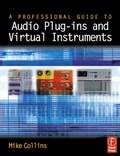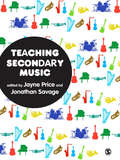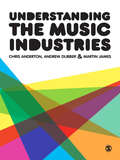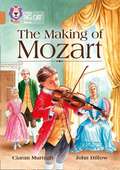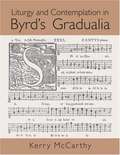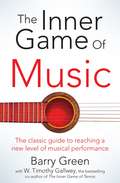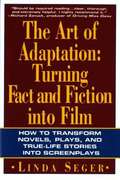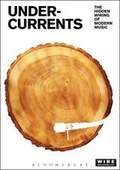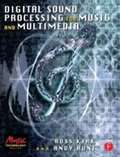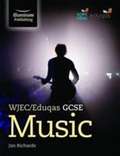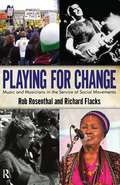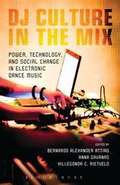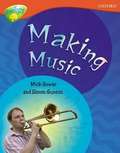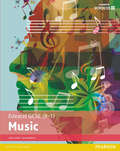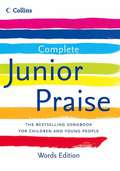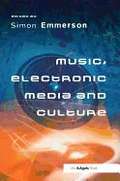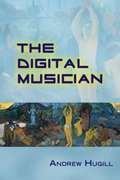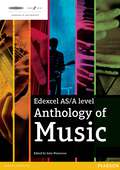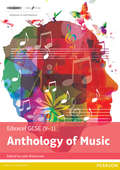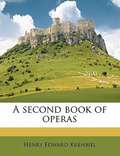- Table View
- List View
A Professional Guide to Audio Plug-ins and Virtual Instruments
by Mike CollinsIf you are an audio professional needing a complete reference to the complex world of plug-ins and virtual instruments, look no further. Mike Collins, author of Pro Tools for Music Production, has meticulously surveyed the scene, showing what's available and how they integrate into the various host platforms. The book explains the differences between TDM, RTS, MAS and VST plug-ins, how they can be used with different MIDI + Audio programs and shows the range of options available. It also explains virtual instruments and how these can be used as either plug-ins or stand alone products. A must for every recording studio. The book combines explanations, overviews and key concepts with practical considerations and hands-on examples. The reader will gain a broad understanding of the options available, how they work and the possibilities for integration with systems as well as the end result. The book also includes a section on how to write your own plug-ins and a suggested standard plug-ins portfolio for those wanting to get started quickly.
Teaching Secondary Music
by Jayne Price Jonathan SavageDesigned to support teachers in developing new strategies and pedagogies for teaching music, and for teacher education students requiring a comprehensive overview of the subject Teaching Secondary Music provides a modern and accessible insight into the key issues in music education at secondary level. Focusing on the nature of musical understanding and how to facilitate and assess musical progress, the editors bring together a team of experienced music educators leading the programme of support for the new secondary curriculum. Supported with practical examples, case studies and resources exploring effective practice, Teaching Secondary Music covers the key concepts and approaches which underpin good practice in secondary music education. These include: -How music relates to other curriculum subjects -Ways of implementing newer aspects of the curriculum -The music industry and intellectual property rights -Working with a range of musicians -Using ICT as a tool for musical performance -Developing musical leadership This book is essential reading for PGCE Secondary music specialists and practising music teachers. Jayne Price is the Music Education Coordinator in the School of Education and Professional Development at the University of Huddersfield. Jonathan Savage is a Reader in Education at the Institute of Education, Manchester Metropolitan University.
Understanding the Music Industries
by Andrew Dubber Chris Anderton Martin JamesEveryone knows music is big business, but do you really understand how ideas and inspiration become songs, products, downloads, concerts and careers? This textbook guides students to a full understanding of the processes that drive the music industries. More than just an expose or 'how to' guide, this book gives students the tools to make sense of technological change, socio-cultural processes, and the constantly shifting music business environment, putting them in the front line of innovation and entrepreneurship in the future. Packed with case studies, this book: • Takes the reader on a journey from Glastonbury and the X-Factor to house concerts and crowd-funded releases; • Demystifies management, publishing and recording contracts, and the world of copyright, intellectual property and music piracy; • Explains how digital technologies have changed almost all aspects of music making, performing, promotion and consumption; • Explores all levels of the music industries, from micro-independent businesses to corporate conglomerates; • Enables students to meet the challenge of the transforming music industries. This is the must-have primer for understanding and getting ahead in the music industries. It is essential reading for students of popular music in media studies, sociology and musicology.
Collins Big Cat, Band 12, Copper: The Making of Mozart (PDF)
by Ciaran Murtagh Collins Big Cat StaffGet ready to meet a small boy with a big talent! Wolfgang Amadeus Mozart was composing music and travelling the world to perform for kings and emperors when he was only eight years old. This is his story. * Copper/Band 12 books provide more complex plots and longer chapters that develop reading stamina. * Text type - An information book. * The book is organised into short chapters to help children practise the skills of locating and identifying important information. * The glossary and index on pages 28 and 29 can be used to develop children's information retrieval skills further. * Curriculum links - Music
Denes Agay's Learning To Play Piano - Book 1 (PDF)
by Denes Agay(Yorktown). A progression of melodic pieces and studies teaching the basics step by step. A fresh, unhurried and sound approach to piano study. It offers a veritable treasure of delightfully melodic, inventive repertoire to illustrate and correlate technique, theory, and musicianship.
Liturgy and Contemplation in Byrd’s Gradualia (PDF)
by Kerry MccarthyWilliam Byrd s Gradualia is one of the most unusual and elaborate musical works of the English Renaissance. This large collection of liturgical music, 109 pieces in all, was written for clandestine use by English Catholics at a time when they were forbidden to practice their religion in public. When Byrd began to compose the Gradualia, he turned from the penitential and polemical extravagances of his earlier Latin motets to the narrow, carefully ordered world of the Counter-Reformation liturgy. It was in this new context, cut off from his familiar practice of choosing colorful texts and setting them at length, that he first wrote about the "hidden and mysterious power" of sacred words to evoke a creative response. Liturgy and Contemplation in Byrd s Gradualia responds to Byrd s own testimony by exploring how he read the texts of the Mass and the events of the church calendar. Kerry McCarthy examines early modern English Catholic attitudes toward liturgical practice, meditation, and what the composer himself called "thinking over divine things. " She draws on a wide range of contemporary sources devotional treatises, commentaries on the Mass, poetry, memoirs, letters, and Byrd s dedicatory prefaces and revisits the Gradualia in light of this evidence. The book offers a case study of how one artist reimagined the creative process in the final decades of his life. " 9786611313791
Liturgy and Contemplation in Byrd’s Gradualia
by Kerry MccarthyWilliam Byrd s Gradualia is one of the most unusual and elaborate musical works of the English Renaissance. This large collection of liturgical music, 109 pieces in all, was written for clandestine use by English Catholics at a time when they were forbidden to practice their religion in public. When Byrd began to compose the Gradualia, he turned from the penitential and polemical extravagances of his earlier Latin motets to the narrow, carefully ordered world of the Counter-Reformation liturgy. It was in this new context, cut off from his familiar practice of choosing colorful texts and setting them at length, that he first wrote about the "hidden and mysterious power" of sacred words to evoke a creative response. Liturgy and Contemplation in Byrd s Gradualia responds to Byrd s own testimony by exploring how he read the texts of the Mass and the events of the church calendar. Kerry McCarthy examines early modern English Catholic attitudes toward liturgical practice, meditation, and what the composer himself called "thinking over divine things. " She draws on a wide range of contemporary sources devotional treatises, commentaries on the Mass, poetry, memoirs, letters, and Byrd s dedicatory prefaces and revisits the Gradualia in light of this evidence. The book offers a case study of how one artist reimagined the creative process in the final decades of his life. " 9786611313791
The Inner Game Of Music
by Barry Green W. Timothy GallweyThe bestselling guide to improving musical performanceThe Inner Game of Music is the battle that all musicians have to fight against elusive opponents such as nervousness, self-doubt and fear of failure. Using the world-famous Inner Game principles, developed by bestselling author Timothy Gallwey, acclaimed musician Barry Green explains the basic principles of 'natural learning' and shows how you can apply them to reach a new level of musical application and performance. In precise, easy to understand language, Green and Gallwey explain how natural skills - such as awareness, trust and willpower - can be nurtured and enhanced. Through a series of tailored exercises The Inner Game of Music demonstrates the ways in which musicians can achieve exact intonations, artistic phrasing and improved technique. There are also chapters on ensemble playing, improvisation, composition and creativity, as well as listening skills - an essential part of the Inner Game. Following a methodology with a proven track record for generations of aspiring and professional musicians, The Inner Game of Music is invaluable to anyone seriously interested in music, and is guaranteed to deliver positive results whether you are a student, teacher, performer, or simply an appreciative listener.
The Art of Adaptation: Turning Fact and Fiction into Film (PDF)
by Linda SegerAdaptations have long been a mainstay of Hollywood and the television networks. Indeed, most Academy Award- and Emmy Award-winning films have been adaptations of novels, plays, or true-life stories. Linda Seger, author of two acclaimed books on scriptwriting, now offers a comprehensive handbook for screenwriters, producers, and directors who want to successfully transform fictional or factual material into film. Seger tells how to analyze source material to understand why some of it resists adaptation. She then gives practical methods for translating story, characters, themes, and style into film. A final section details essential information on how to adapt material and how to protect oneself legally
Undercurrents: The Hidden Wiring Of Modern Music (PDF)
by The Wire Rob YoungFor the last twenty years The Wire has fearlessly bypassed fashion in it's search to expose the most innovative, radical, and compelling music from every genre all across the world. As listeners have grown increasingly eclectic and adventurous in their tastes, The Wire has emerged as the most authoritative source on modern music. In Undercurrents some of the best music writers of our time uncover the hidden wiring of the past century's most influential music. Ian Penman discusses how the microphone transformed the human voice and made phantom presences of great singers such as Billie Holiday, Robert Johnson, and Brian Wilson. Christoph Cox demonstrates how the pioneers of live electronic music, the West Coast ensemble Sonic Arts Union, redefined virtuosity for the electronic age. Philip Smith and Peter Shapiro examine Harry Smith's Smithsonian Anthology of American Folk Music, which led to a massive reappraisal of musical values that went far beyond the folk music revival. Music explored in Undercurrents ranges through avant rock, jazz, hiphop, electronica, global music, and contemporary "classical. "
The Performance and Popular Music: History, Place and Time (PDF)
by Derek Scott Ian InglisSince the emergence of rock'n'roll in the early 1950s, there have been a number of live musical performances that were not only memorable in themselves, but became hugely influential in the way they shaped the subsequent trajectory and development of popular music. Each, in its own way, introduced new styles, confronted existing practices, shifted accepted definitions, and provided templates for others to follow. Performance and Popular Music explores these processes by focusing on some of the specific occasions when such transformations occurred An international array of scholars reveal that it is through the (often disruptive) dynamics of performance âe" and the interaction between performer and audience âe" that patterns of musical change and innovation can best be recognised. Through multi-disciplinary analyses which consider the history, place and time of each event, the performances are located within their social and professional contexts, and their immediate and long-term musical consequences considered. From the Beatles and Bob Dylan to Michael Jackson and Madonna, from Woodstock and Monterey to Altamont and Live Aid, this book provides an indispensable assessment of the importance of live performance in the practice of popular music, and an essential guide to some of the key moments in its history. Alternate ISBN 9780754640561
Digital Sound Processing For Music And Multimedia
by Ross Kirk Andy HuntProvides an introduction to the nature, synthesis and transformation of sound which forms the basis of digital sound processing for music and multimedia. Background information in computer techniques is included so that you can write computer algorithms to realise new processes central to your own musical and sound processing ideas. Finally, material is inlcuded to explain the way in which people contribute to the development of new kinds of performance and composition systems. Key features of the book include: · Contents structured into free-standing parts for easy navigation · `Flow lines' to suggest alternative paths through the book, depending on the primary interest of the reader. · Practical examples are contained on a supporting website. Digital Sound Processing can be used by anyone, whether from an audio engineering, musical or music technology perspective. Digital sound processing in its various spheres - music technology, studio systems and multimedia - are witnessing the dawning of a new age. The opportunities for involvement in the expansion and development of sound transformation, musical performance and composition are unprecedented. The supporting website (www. york. ac. uk/inst/mustech/dspmm. htm) contains working examples of computer techniques, music synthesis and sound processing.
WJEC/Eduqas GCSE Music (PDF)
by Jan RichardsThis book is designed to help with the WJEC/Eduqas GCSE Music course. It is divided into five sections: one section on each of the four areas of study - Section 1 Musical Forms and Devices, Section 2 Music for Ensemble, Section 3 Film Music and Section 4 Popular Music - and a final section, Section 5 GCSE Music: Student Support on student-specific material.
Playing for Change: Music and Musicians in the Service of Social Movements
by Rob Rosenthal Richard FlacksAlthough music is known to be part of the great social movements that have rocked the world, its specific contribution to political struggle has rarely been closely analyzed. Is it truly the 'lifeblood' of movements, as some have declared, or merely the entertainment between the speeches? Drawing on interviews, case studies and musical and lyrical analysis, Rosenthal and Flacks offer a brilliant analysis and a wide-ranging look at the use of music in movements, in the US and elsewhere, over the past hundred years. From their interviews, the voices of Pete Seeger, Ani DiFranco, Tom Morello, Holly Near, and many others enliven this highly readable book.
DJ Culture in the Mix: Power, Technology, and Social Change in Electronic Dance Music (PDF)
by Bernardo Alexander Attias Bernardo Attias Anna Gavanas Hillegonda C. Rietveld Hillegonda RietveldThe DJ stands at a juncture of technology, performance and culture in the increasingly uncertain climate of the popular music industry, functioning both as pioneer of musical taste and gatekeeper of the music industry. Together with promoters, producers, video jockeys (VJs) and other professionals in dance music scenes, DJs have pushed forward music techniques and technological developments in last few decades, from mashups and remixes to digital systems for emulating vinyl performance modes. This book is the outcome of international collaboration among academics in the study of electronic dance music. Mixing established and upcoming researchers from the US, Canada, the UK, Germany, Austria, Sweden, Australia and Brazil, the collection offers critical insights into DJ activities in a range of global dance music contexts. In particular, chapters address digitization and performativity, as well as issues surrounding the gender dynamics and political economies of DJ cultures and practices.
Oxford Reading Tree, Level 13, TreeTops Non-Fiction: Making Music (PDF)
by Mick Gowar Simon GuntonBook band 13 grey. Oxford level 13. TreeTops Non-fiction offers fascinating titles in which children can access a wide range of interesting and thought-provoking topics. Supports the transition from learning to read, to reading to learn. Covers a wide range of popular topics, fueling discussion. Great for combinating literacy with other subjects. Covers a range of non-fiction text types needed to expand your students' reading skills. Stunning photography and artwork engages readers and brings topics to life.
Edexcel Gcse (9-1) Music (PDF)
by Jonny Martin John ArkellThe Edexcel GCSE (9-1) Music Student Book new edition includes: A basic introduction to understanding music and musical notation, enabling students of all abilities to access the course content and make progress Detailed analysis of the 8 set works, focussing on the musical elements, musical contexts and musical language that students will need to know and apply New Wider Listening features to help students understand the wider context of the set works Glossary of key words enabling students to recognise and use appropriate musical vocabulary Preparing for the Exam section to support revision for the listening and appraising paper.
Complete Junior Praise Words (PDF)
by Peter Horrobin Greg LeaversFor over 20 years Junior Praise has been the leading songbook in schools and Sunday schools in the UK, and around the world. Complete Junior Praise includes the whole of the existing collection of 500 songs and hymns, and adds over 100 of the best new songs from the past few years. The ultimate collection of modern songs and traditional hymns for a younger audience, Complete Junior Praise is ideal for use in a wide range of settings, from singing groups and Sunday schools to children's choirs and school assemblies. * Now with over 600 hymns and songs for every occasion* Includes all the best new songs from the past few years* Fully compatible with previous editions of Junior Praise* Easy-to-use index of first lines and titles* Words and sheet music downloads available from www. collins. co. uk
Music, Electronic Media And Culture (PDF)
by Simon EmmersonTechnology revolutionised the ways that music was produced in the twentieth century. As that century drew to a close and a new century begins a new revolution in roles is underway. The separate categories of composer, performer, distributor and listener are being challenged, while the sounds of the world itself become available for musical use. All kinds of sounds are now brought into the remit of composition, enabling the music of others to be sampled (or plundered), including that of unwitting musicians from non-western cultures. This sound world may appear contradictory - stimulating and invigorating as well as exploitative and destructive. This book addresses some of the issues now posed by the brave new world of music produced with technology.
Plan of an Orchestra layout (UEB Contracted)
This is a labelled plan (seen from above) of a classical orchestra, showing where the various instrumentalists and the conductor are placed on the concert platform. There is a locator dot shown, which will be at the top left of the page when the image is the right way up. The conductor is in the bottom centre of the page; he is the performer who is nearest the audience and stands with his back to them, facing the rest of the players further up the page. The various areas occupied by the instruments are labelled. The stringed instruments occupy the bottom third of the page with the woodwind and brass instruments further up the page. The percussion instruments are at the top left of the page.
Plan of an Orchestra layout (UEB Uncontracted)
This is a labelled plan (seen from above) of a classical orchestra, showing where the various instrumentalists and the conductor are placed on the concert platform. There is a locator dot shown, which will be at the top left of the page when the image is the right way up. The conductor is in the bottom centre of the page; he is the performer who is nearest the audience and stands with his back to them, facing the rest of the players further up the page. The various areas occupied by the instruments are labelled. The stringed instruments occupy the bottom third of the page with the woodwind and brass instruments further up the page. The percussion instruments are at the top left of the page.
The Digital Musician: Creating Music With Digital Technology
by Andrew HugillThe Digital Musician examines cultural awareness, artistic identity and musical skill through the prism of recent technological innovations. New technologies, and especially the new digital technologies, mean that anyone can create music without any musical training. How do we know what is good? This involves developing a personal aesthetic, an awareness of the context for one s work, specific musical and technical abilities and an individual identity. "
Edexcel As/a Level Anthology Of Music (PDF)
by Julia WintersonThe Pearson Edexcel AS/A level Anthology of Music introduces the AS and A level set works to a new generation of musicians and will inspire them to develop their music knowledge, understanding and skills and will help them prepare for their assessment. Published in partnership with Edition Peters and Faber Music, and edited by Julia Winterson, the printed Anthology contains: · printed music scores of all 53 new set works in a single volume · a preface to each score, setting the piece in context, highlighting key themes · listening awareness points and suggestions for wider listening · glossary of key terms used in each set work.
Edexcel Gcse (9-1) Anthology Of Music (PDF)
by Julia WintersonThe Pearson Edexcel GCSE Anthology of Music introduces the GCSE set works to a new generation of musicians and will inspire them to develop their music knowledge, understanding and skills and will help them prepare for their assessment. Published in partnership with Edition Peters and Faber Music, and edited by Julia Winterson, the printed Anthology contains: printed music scores of all 8 new set works in a single volume a preface to each score, setting the piece in context and highlighting key themes and listening awareness points glossary of key terms used in each set work.
